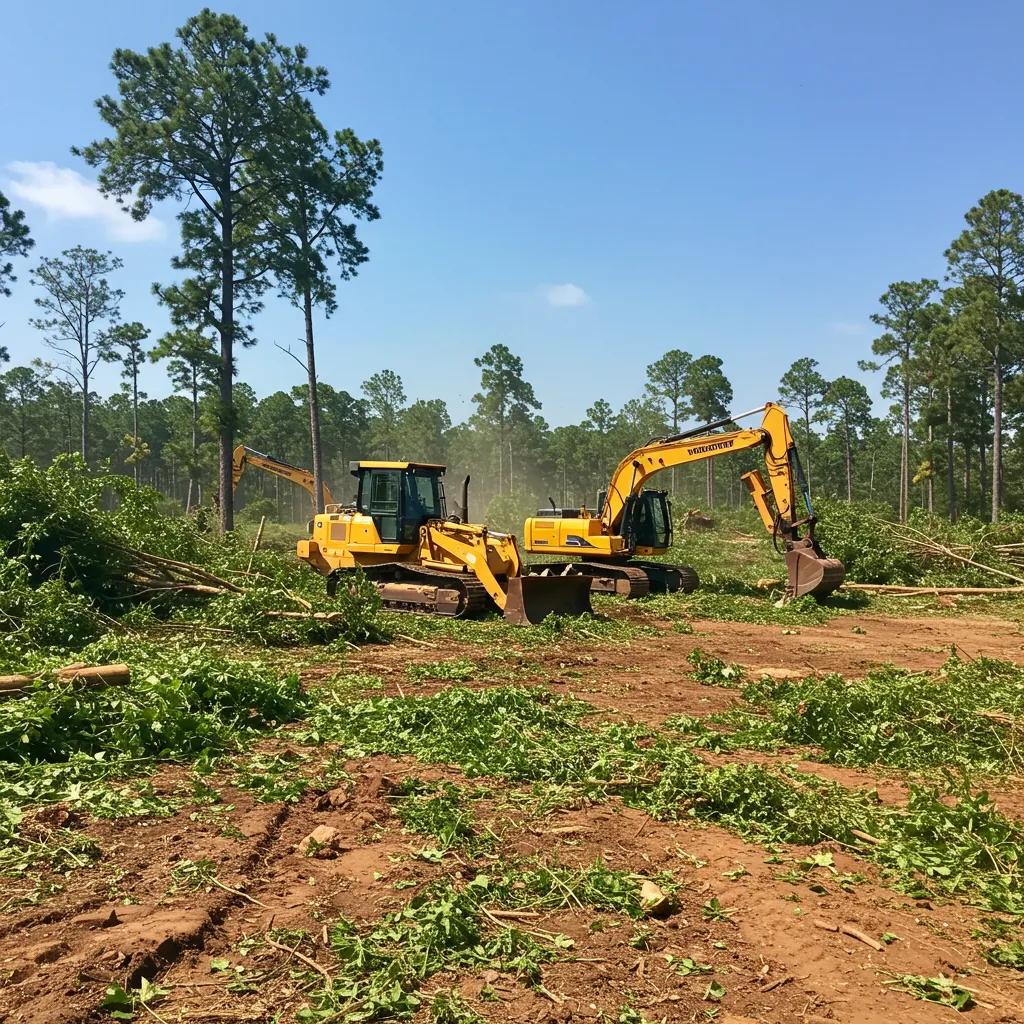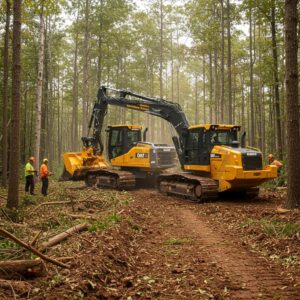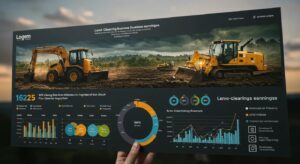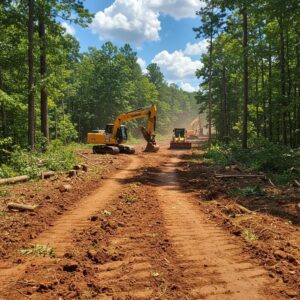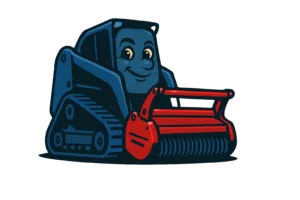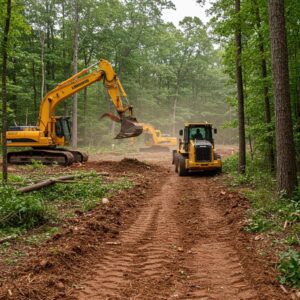Mastering Land Clearing Estimates: Your Blueprint for Profitability
Nailing your land clearing bids means locking in profit and sidestepping costly overruns. It’s all about pinpointing your cost per acre by weaving together site specifics, equipment needs, labor rates, disposal fees, permits, and your profit goals. When you truly grasp every factor that shapes your bids, you’ll bid with unshakeable confidence. This guide breaks down the essential cost drivers, pricing models, a foolproof estimating process, profit boosters, regional rate insights, smart bidding tactics, and real-world wins. We’re arming you with the sharpest insights to set rates that are both competitive and highly profitable. Need to dive deeper into pricing and marketing mastery? Rise Online Advertising LLC’s proven training resources are here to elevate your business.
What Drives the Cost Per Acre in Land Clearing?
Your cost per acre in land clearing is the sum of all expenses to clear one acre of land. Getting this unit price right hinges on a web of interconnected factors that dictate equipment time and labor investment. Understanding these key drivers means fewer scope misunderstandings and happier clients. For instance, tackling dense thickets can easily triple the machine hours needed compared to clearing light grasses.
Site complexities and regulatory hurdles also tweak that per-acre figure. Steep inclines demand specialized gear, chewing up more fuel and causing faster wear. Permits and disposal fees can easily add hundreds of dollars per acre in many areas. Anticipating these variables is your ticket to more precise and profitable estimates.
| Cost Driver | What It Involves | Impact on Your Per-Acre Cost |
|---|---|---|
| Vegetation | The kind and thickness of brush and trees | Significantly increases removal time |
| Terrain | Slope, soil type, and ground conditions | Affects equipment wear and fuel consumption |
| Acreage | The total size of the project | Can lead to cost efficiencies at scale |
| Equipment | Type of machinery and hours of operation | Represents rental or ownership expenses |
| Labor | Crew size and skill level | Directly impacts hourly wage costs |
| Disposal | Hauling, landfill fees, chipping services | Incurs per-ton or per-cubic-yard charges |
Mapping out these cost drivers is your launchpad for choosing the smartest pricing model. Let’s explore the common pricing frameworks and how they fit your projects.
How Does Vegetation Type and Density Shape Your Pricing?
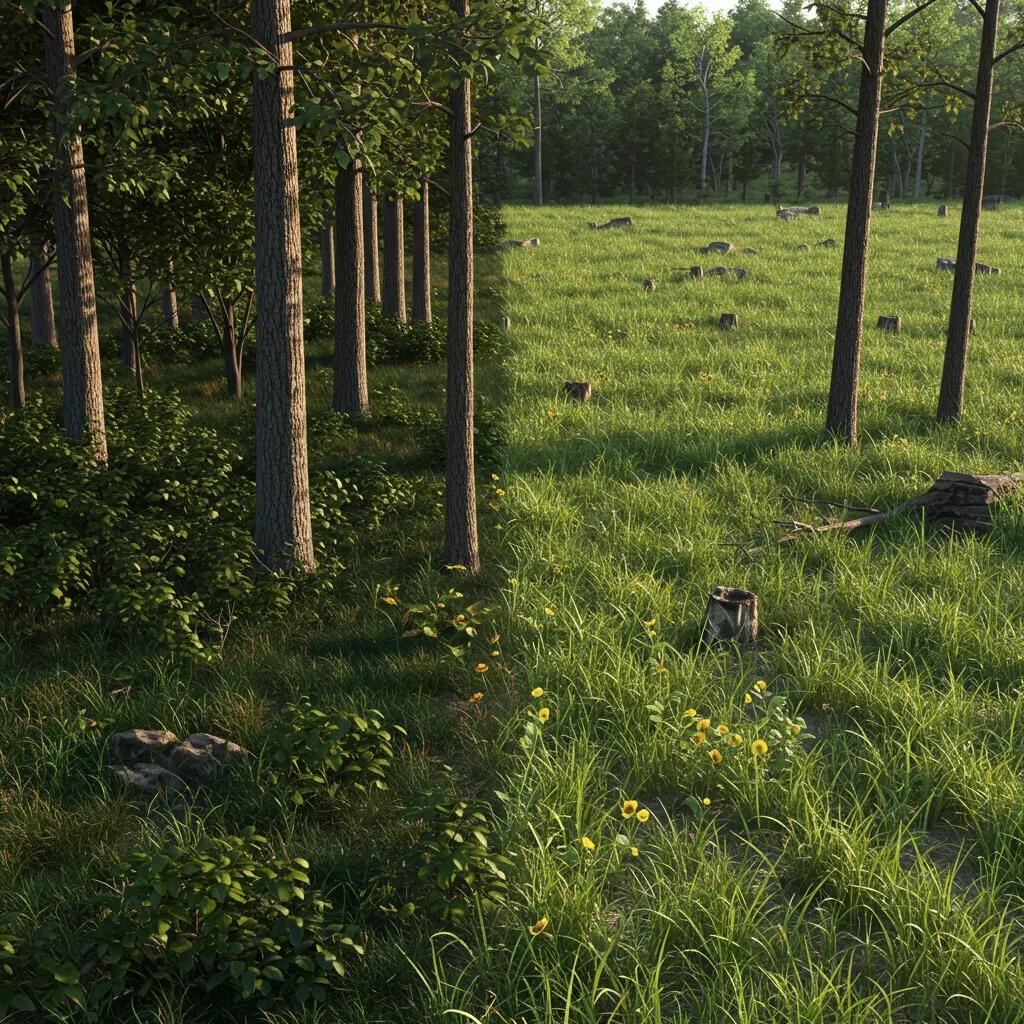
The type and density of vegetation are the primary determinants of the effort required to clear land per acre. Dense forests and thick brush demand slower machine passes and often necessitate specialized attachments. This directly translates to higher fuel consumption and more operator hours, driving up your per-acre rate. For example, clearing half an acre of dense hardwood saplings can easily take double the time compared to tackling light brush.
Why Do Land Size and Terrain Matter for Clearing Rates?
Larger land parcels often benefit from economies of scale, leading to lower per-acre costs. Gentle, flat terrain allows machinery to move more quickly and consume less fuel. Conversely, steep slopes or rocky soil significantly reduce equipment productivity and necessitate heightened safety measures. These challenging conditions naturally lead to higher hourly rates and extended project timelines.
What's the Role of Equipment Choice in Costing?
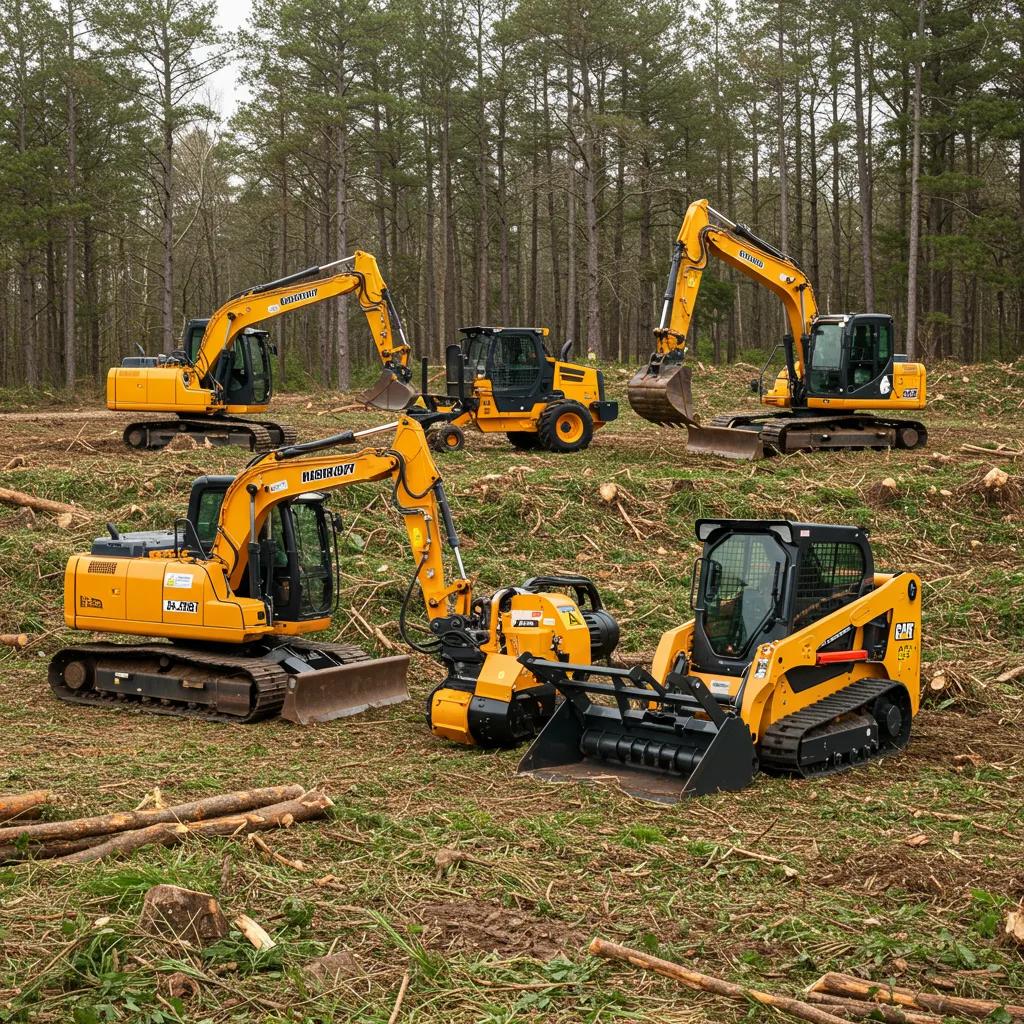
Selecting the right machinery impacts both your operational efficiency and how you allocate overhead. Forestry mulchers and excavators can tackle dense vegetation more rapidly but come with higher hourly ownership costs. Smaller skid steers might be suitable for lighter brush but can extend project completion times. The optimal equipment mix balances speed with per-hour expense.
How Do Labor Costs and Crew Skill Affect Your Pricing?
The skill level of your crew directly influences project speed and the quality of the finished work, impacting overall costs. Highly experienced operators command higher wages but complete tasks more efficiently, reducing total billable hours. Less experienced crews might require more supervision and potential rework, adding indirect expenses. Accurately factoring in your crew composition ensures your labor line items are realistic.
What Disposal, Hauling, and Permitting Fees Must You Account For?
Disposing of cleared materials incurs costs for landfill tipping fees, chipping services, or on-site burning permits. Long hauling distances multiply transportation charges and associated labor time. Obtaining local permits often involves environmental reviews and bonding requirements. Diligently including these regulatory and waste management expenses is crucial to avoid underquoting.
How Does Site Accessibility and Logistics Impact Your Bid?
Easily accessible sites minimize equipment mobilization time and reduce labor overhead. Narrow driveways, remote locations, or challenging access roads may require specialized transport or additional setup. Positioning staging areas close to the work zone cuts down on travel delays. A thorough evaluation of site logistics early on sharpens your bid accuracy.
What Are the Go-To Land Clearing Pricing Models and How Do They Work?
Land clearing contractors typically lean on three primary pricing frameworks to structure costs and profits. Each model approaches client billing differently but aims to reflect the effort, resources utilized, and market expectations. Choosing the best model hinges on project complexity, your risk appetite, and client preferences. Mastering these approaches allows you to craft competitive and transparent proposals.
Key Pricing Models:
- Per Acre Pricing sets a fixed rate for each cleared acre, ideal for straightforward projects.
- Hourly Rate Pricing bills for actual machine and crew time, perfect for variable conditions.
- Fixed Bid/Project Pricing locks in a total sum for the entire scope, shifting risk to the contractor.
Per Acre Pricing works best for uniform terrain and vegetation across large areas. Hourly Rate Pricing offers flexibility for unpredictable site conditions and mid-project adjustments. Fixed Bid Pricing encourages efficiency but demands meticulous site assessment and risk contingency planning before quoting.
Per Acre Pricing vs. Hourly Rate Pricing: What's the Difference?
Per acre pricing offers clients budget predictability by multiplying a unit rate by the number of acres. Hourly rate pricing, on the other hand, adjusts dynamically based on actual machine and labor hours expended. The former simplifies invoicing but risks under- or over-estimating when site conditions are inconsistent. Hourly billing transfers the variability risk to the client while ensuring you’re fairly compensated for all work performed.
When Does Fixed Bid or Project-Based Pricing Make the Most Sense?
Fixed bid pricing is most effective when site conditions are thoroughly understood and the scope is unlikely to change. Contractors who conduct exhaustive assessments can build contingency buffers into the lump sum. This model appeals to clients seeking a guaranteed total cost but requires precise cost breakdowns and robust risk management. It becomes less practical if significant scope modifications are anticipated mid-project.
What Are the Upsides and Downsides of Each Pricing Model?
- Per Acre simplifies comparison but can penalize complex or challenging areas.
- Hourly Rate ensures full cost recovery but might introduce client budget uncertainty.
- Fixed Bid provides client budget certainty but places the efficiency risk squarely on the contractor.
How to Calculate a Land Clearing Estimate That Hits the Mark, Step-by-Step
Developing a precise land clearing estimate demands a structured approach that accounts for every cost driver and your desired profit. A methodical, step-by-step process ensures consistency and reliability in your bids. This methodology builds client trust and boosts your win rates by showcasing your professionalism. Following these steps transforms raw site data into a detailed, actionable quote.
Step 1: Conducting a Deep-Dive Site Assessment for Accurate Pricing
Start with a comprehensive site walk-through to map out vegetation, terrain features, and access challenges. Accurately measure acreage, slopes, and the density of obstacles using GPS or drone technology. Note any sensitive areas that might require special disposal methods or permits. Document all findings meticulously; this forms the bedrock of your equipment and labor planning.
Step 2: Estimating Equipment and Labor Hours with Precision
Based on vegetation density and terrain, compile a list of the necessary machinery and attachments. Utilize your historical productivity data to project machine hours per acre. Determine the optimal crew size and the required expertise for efficient operations. Multiply these projected hours by the respective cost rates to establish your equipment and labor line items.
Step 3: Factoring in Overhead and Your Target Profit Margins
Allocate a percentage of your indirect costs, such as insurance, administrative expenses, and equipment depreciation. Add a profit margin that aligns with your market position and business objectives. Combine these overhead and profit figures with your direct costs to determine the final markup. Clearly defining your margin strategy protects against underpricing and fuels sustainable growth.
Step 4: Incorporating Disposal, Permitting, and Regulatory Costs
Calculate hauling costs based on cubic yards or tons for material removal to landfills or chipping facilities. Add all applicable permit application fees and any environmental mitigation expenses. Factor in local regulations that might mandate erosion control measures or site restoration. Summing these ensures no hidden costs will surprise you or your client.
Step 5: Presenting Your Land Clearing Quote Like a Pro
Utilize a clean, well-organized proposal template that includes itemized cost breakdowns. Clearly define the scope of work, outline any assumptions made, and state your terms to prevent misunderstandings. Emphasize key inclusions like equipment rates, labor hours, and disposal fees. A polished presentation builds credibility and accelerates client approvals.
How to Maximize Profit Margins on Your Land Clearing Projects
Boosting profit margins in land clearing involves a blend of operational efficiency, smart marketing, and cultivating strong client relationships. Contractors who embrace technology and targeted lead generation are better positioned to secure higher-value projects. Building a base of repeat business through exceptional customer service also significantly drives profitability. Integrating these strategies elevates your net margins without compromising service quality.
Top Strategies for Boosting Your Margins:
- Invest in advanced GPS mapping and automated machinery to slash idle time.
- Deploy data-driven local advertising to attract premium clients and reduce bidding wars.
- Implement robust customer relationship practices that encourage referrals and repeat business.
How Do Technology and Equipment Efficiency Boost Your Bottom Line?
Machine automation and GPS-guided clearing minimize overlap and reduce fuel consumption. Real-time telematics provide performance metrics, enabling swift operational adjustments. Efficient equipment utilization lowers per-acre costs while protecting your margins. Contractors gain a significant competitive edge by completing more acres daily.
What Marketing Strategies Drive Better Pricing and More Leads?
Targeted online advertising and local SEO efforts position your business effectively before high-value prospects. Publishing educational content about your pricing expertise builds trust and justifies premium rates. Showcasing past successes through case studies reinforces your credibility. Well-executed campaigns fill your sales pipeline with clients who value quality and results.
How Can Customer Relationship Management Elevate Your Pricing Success?
Maintaining open communication and prompt follow-ups significantly enhances client satisfaction. Automated reminders for maintenance or follow-up visits encourage repeat engagements. Offering personalized service options deepens client trust and opens doors for upsells. Strong relationships minimize price objections and foster enduring partnerships.
What Are Typical Land Clearing Rates and How Do Regional Differences Impact Pricing?
Average land clearing rates fluctuate considerably, influenced by local market conditions and cost structures. Nationally, rates can range from $600 to $2,500 per acre for moderately challenging projects in 2025. Regional competition, labor availability, and environmental regulations all play a role in local pricing power. Contractors should benchmark their bids against these averages to ensure competitive positioning.
| Region | Average Rate Per Acre | Key Factors Influencing Rates |
|---|---|---|
| Northeast | $800 – $2,200 | Higher labor costs and stringent permit requirements |
| Southeast | $600 – $1,800 | Dense vegetation and competitive market landscape |
| Midwest | $700 – $1,600 | Equipment accessibility and varied soil types |
| Southwest | $900 – $2,500 | Remote site challenges and significant disposal expenses |
These regional averages provide a baseline for your rates. Now, let’s look at the typical cost range for clearing a single acre.
What's the Typical Cost to Clear Just One Acre of Land?
Clearing a single acre typically costs between $500 and $3,000, depending heavily on vegetation density, terrain challenges, and chosen disposal methods. Light brush removal might fall at the lower end of this spectrum. Dense tree stands or the need for stump removal will push costs toward the higher end. Always factor in permit and hauling fees for an accurate final price.
How Do Local Demand and Competition Shape Land Clearing Prices?
High local demand for development projects often drives upward pressure on clearing fees. Areas with a large number of experienced contractors tend to experience more competitive bidding. Conversely, rural regions with fewer service providers may command premium rates. Both market saturation and project volume significantly influence local rate trends.
How Do Environmental Rules and Labor Shortages Affect Your Rates?
Stricter environmental regulations add costs related to erosion control, wetland mitigation, and permit compliance. Labor shortages inevitably drive up hourly wage rates, increasing overall project expenses. The complexity of regulations and scarcity of skilled workers can add 10–20% to clearing budgets. Incorporating these external factors ensures your bids are both realistic and profitable.
How to Craft Land Clearing Bids That Are Both Competitive and Profitable
Developing winning bids requires a strategic combination of accurate estimating, clear communication, and smart market positioning. A professional proposal effectively showcases your expertise and justifies your pricing structure. Including detailed scope definitions and clearly stated assumptions minimizes potential client pushback. Establishing a transparent bidding process builds trust and helps you close more contracts.
Top Practices for Winning Bid Proposals:
- Present itemized cost sheets with clear descriptions and unit rates.
- Incorporate contingency allowances to cover unexpected challenges.
- Provide a projected project timeline and payment schedule for client clarity.
What Are the Best Practices for Creating a Winning Bid Proposal?
Start with a compelling cover summary that highlights your unique strengths and past successes. Break down costs by category and clearly explain all assumptions made. Attach relevant site photos or drone maps to validate the scope of work. Employ clean formatting and professional branding to build confidence.
How Can a Land Clearing Bid Calculator Streamline Your Quoting Process?
A bid calculator automates the aggregation of costs based on acreage, machine rates, and labor hours. Input your site parameters and meticulously review the generated line items for completeness. Adjust margins or contingencies as needed before finalizing the quote. Calculators enhance consistency and significantly speed up proposal preparation.
How to Analyze Competitor Pricing Without Sacrificing Your Profitability?
Gather publicly available rate information and client feedback to estimate competitor fees. Carefully compare their service levels and scope definitions against your own offerings. Position your bid to emphasize the added value and superior quality you provide, rather than competing solely on price. Prioritize reliability and excellence to justify premium rates.
Real-World Examples of Successful Land Clearing Pricing Strategies
Case studies offer compelling evidence of how precise pricing leads to stronger margins and fosters repeat business. Documented successes provide valuable blueprints for contractors looking to refine their own bidding methods. Learning from industry leaders can uncover best practices and highlight potential pitfalls. These examples vividly illustrate the power of data-driven estimating and strategic bidding.
How Did XYZ Land Clearing Boost Profits by 15% Through Smarter Pricing?
A mid-sized contractor upgraded its estimating software and standardized its equipment rates. They implemented a fixed bid template that included built-in contingencies. This strategic shift eliminated underquoting and resulted in a 15% increase in net profit margins within a year. Regular review cycles ensured ongoing accuracy and sustained profitability.
What Key Lessons Emerge from Large-Scale Commercial Land Clearing Projects?
Commercial site projects often involve multiple zones with diverse vegetation and varying access conditions. Breaking these sites into smaller sub-sections for pricing significantly improves accuracy. Incorporating phased mobilization and disposal plans minimizes equipment idle time. Large-scale projects underscore the critical importance of detailed site assessments and robust contingency planning.
How Do Industry Reports and Statistics Inform Your Pricing Decisions?
Quarterly industry analyses track average hourly machine rates and labor costs across different regions. Reports on equipment depreciation and fuel price trends highlight key cost drivers. Updates on regulatory changes alert contractors to evolving permit fees and environmental mandates. Leveraging these data sources enhances estimate accuracy and ensures market alignment.
Mastering land clearing pricing empowers contractors to win more bids and safeguard their profit margins. By thoroughly understanding cost factors, applying appropriate pricing models, following a structured estimating process, and optimizing through technology and marketing, business owners can achieve sustainable growth. Rise Online Advertising LLC’s training resources and proven client success strategies are designed to further sharpen your pricing expertise and accelerate your business expansion.

